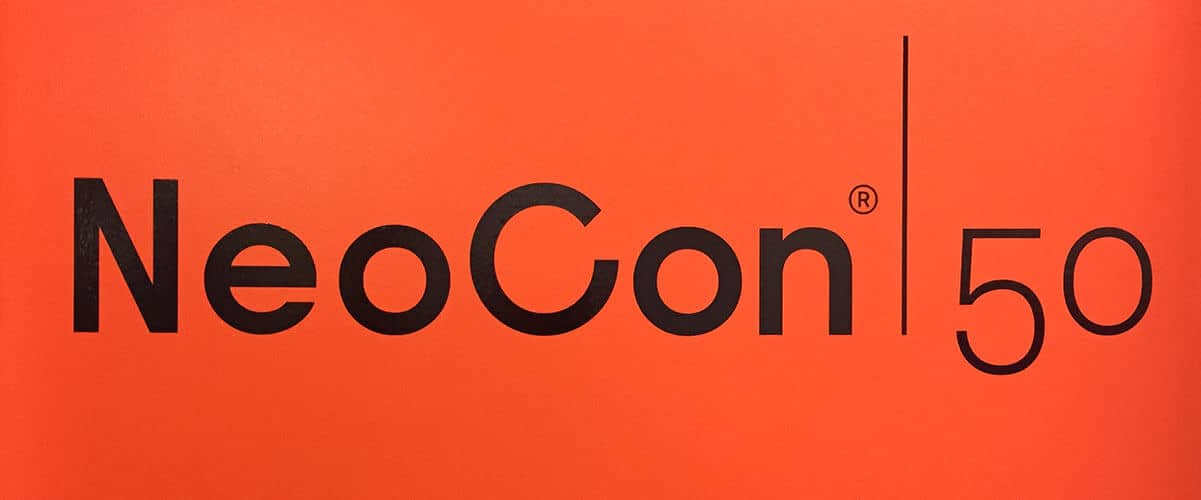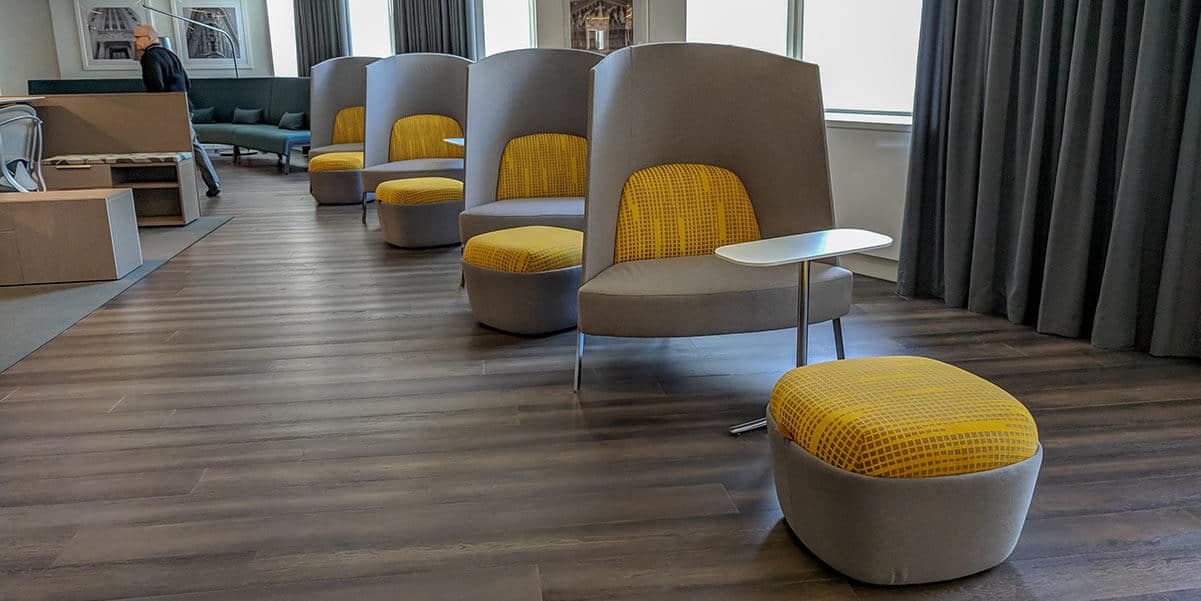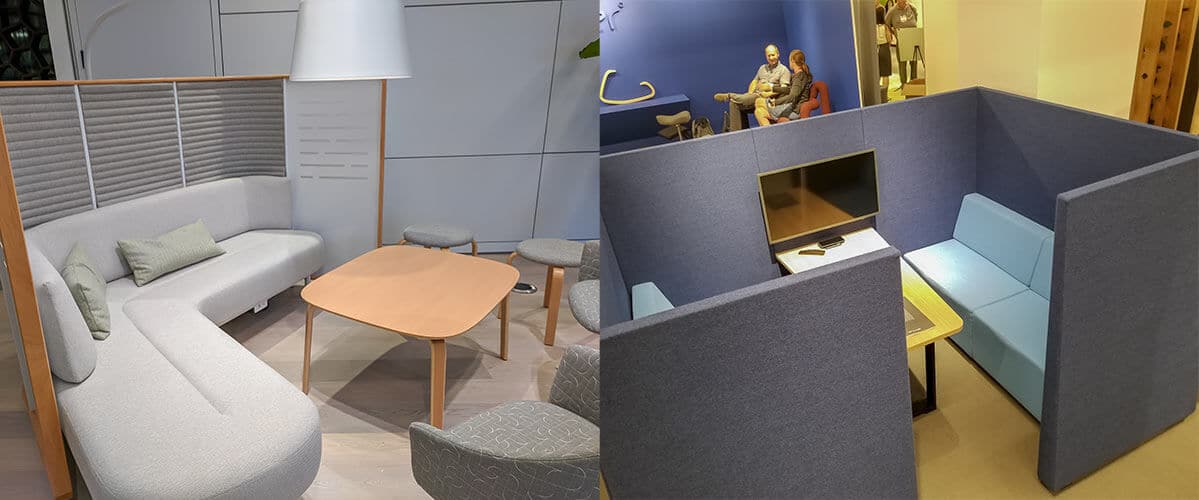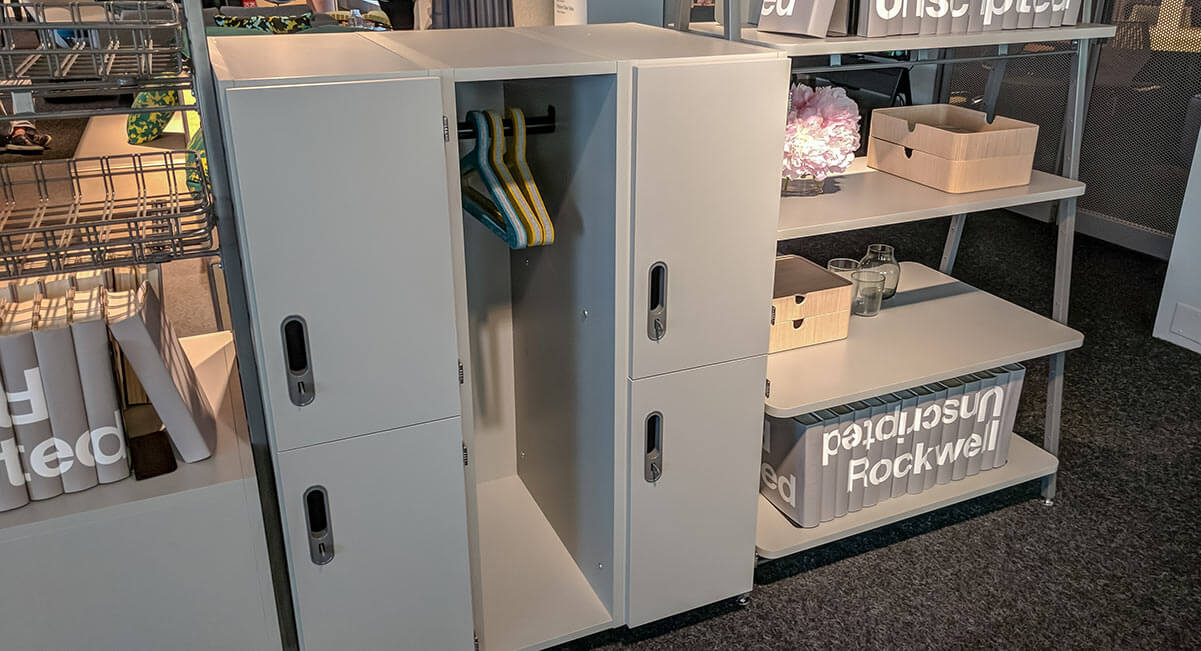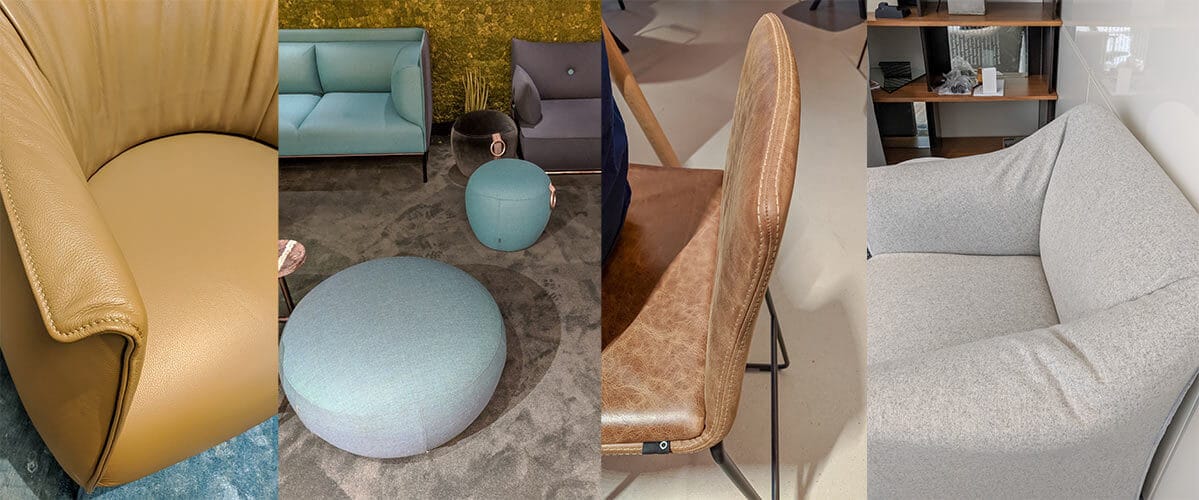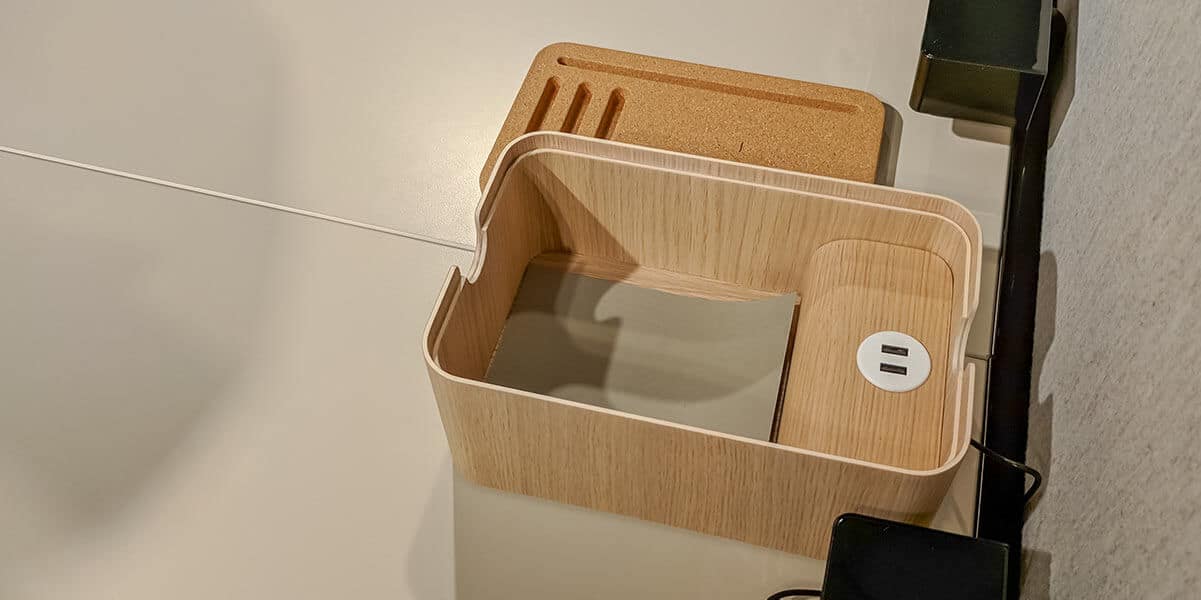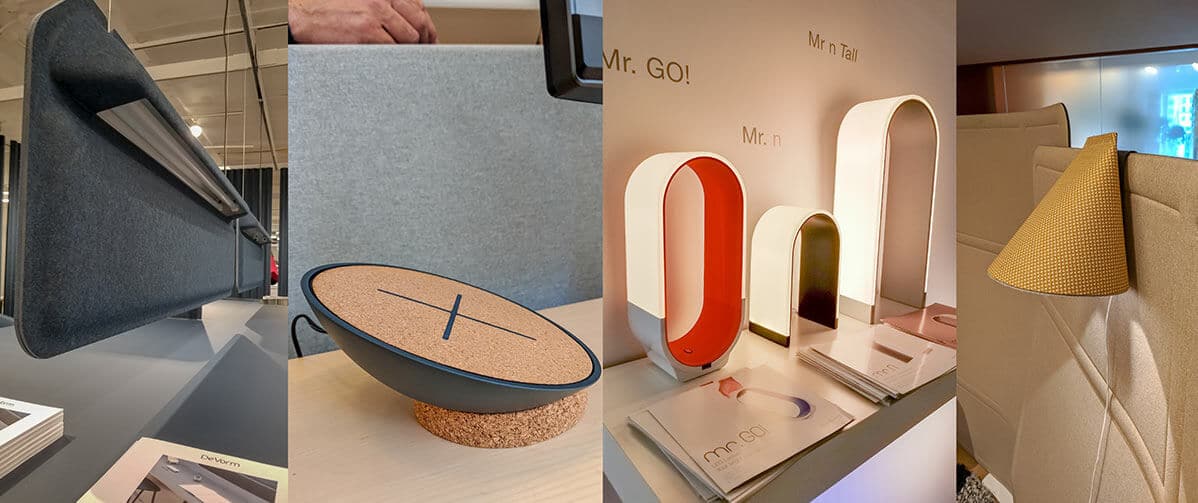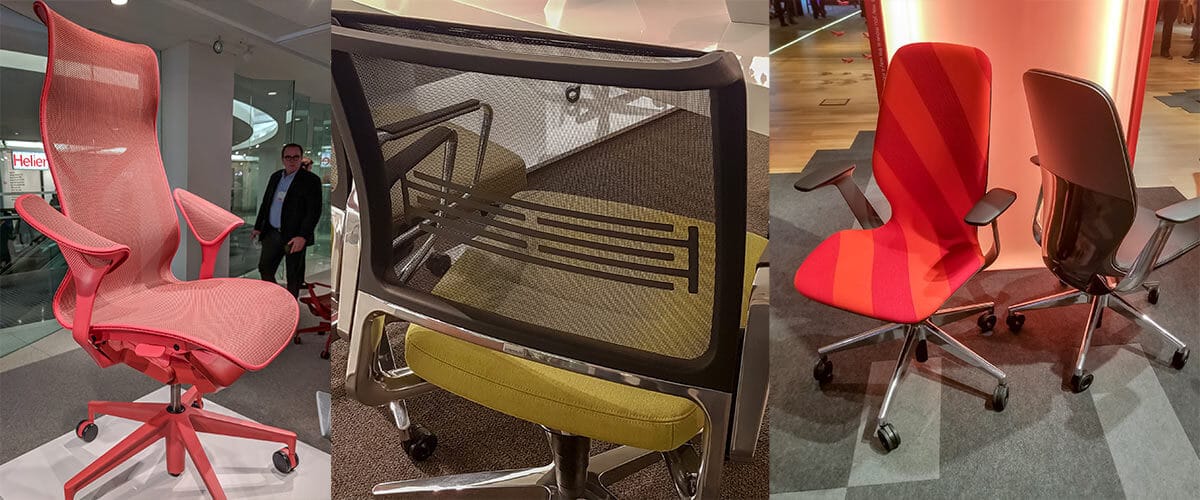4 Trends in Commercial Design from NeoCon 2018
June 22, 2018

Written By:
Colin Jack | Product Design and Manufacturing Engineering

NeoCon is the battle-royale of commercial furniture design. It is the only opportunity for a comprehensive look ahead— all of the big-name brands, all under the same tent (or one very large building) for one short week. It’s the epicenter for showcasing design creativity and idea-making for the commercial furniture market. Several folks from DISHER explored NeoCon 2018 to see the fruits of their labor, be inspired, and take note of future trends. I noticed several interesting trends.
Trends in Commercial Design
Decades ago, Robert Propst’s vision for cubicle-style office spaces was created. The modular dividing systems were meant to give workers the benefits of more privacy and autonomy. Eventually, the cubicle became symbolic of the rat-race drudgery of corporate life. Robert Propst was astonished at what his ideas had become calling it “monolithic insanity”.
A radical transformation came with the open-office-space concept which encouraged creativity, engagement, and ease of collaboration. People worked closely alongside each other, no longer isolated in small compartments. This trend is especially noticeable in recent years as businesses look for ways to steer clear of sprawling cubicle wastelands. Regardless, employees can feel as though they’ve lost the privacy and intimacy with surroundings that they once had with cubicle style systems.
This year at NeoCon, much of the furniture that I saw seemed to selectively pick and choose from both philosophies. A hybrid space that facilitates collaboration but also allows for selective isolation seemed to be a general theme. Some solutions were meant to thoughtfully divide workspaces through innovative layouts and space dividers. Other solutions helped the user’s ability to focus through sound damping. Designers took advantage of opportunities where sound proofing could seamlessly be integrated into existing products.
Semi-Open Spaces
People do the best work when they are not limited by their surroundings. As I see it, the theme of the semi-open office seems to be a continuation of this belief. Products and systems that facilitate any intended level of focus or collaboration appear to be the solution of this generation of commercial furniture. Examples include:
+ Pod-style public workspaces with panel dividers
+ Miniaturized booths and collaboration spaces
+ Integrated sound absorption surfaces and materials
+ Semi-open desks and work station systems
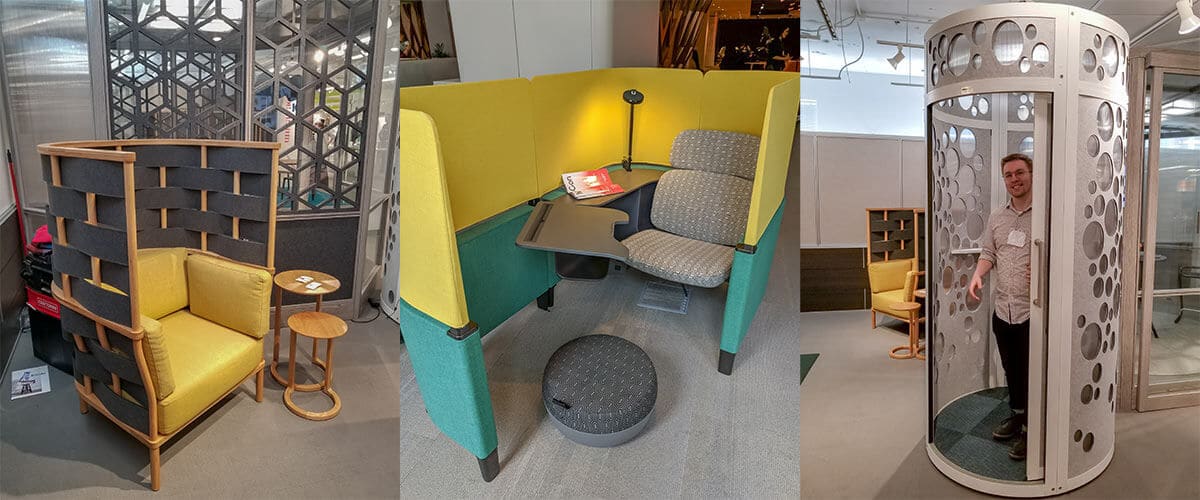
Residential Inspirations
The notion that offices need to be cold, professional, efficient spaces for work was challenged this year. Pieces of furniture that promote intimate, cozy spaces was a reoccurring theme. Home pieces were present that typically wouldn’t be considered commercially viable. Big, comfy couches with loose upholstery to give office workers a sense of relaxation in their busy lives. Rugs in lounge areas naturally created spaces that people can feel comfortable in. Wear and stretch seemed intentional at times. Soft accents gave chairs, sofas, ottomans, and tables a friendly, approachable feel. For personal items, storage solutions were seen directly integrated into workspaces. Examples include:
+ Brown leathers
+ Loose upholstery
+ Heavily-stuffed poufs, ottomans, and sofas
+ Attention drawn to stitching
+ Personal storage integrated into workspaces
+ Comfort as the intended design
Technology
We also saw the tasteful integration of power built into a variety of products. For workstations, collaborative furniture, and conference tables, discrete ports gave a variety of power options. Wireless charging made some appearances as well.
Lighting solutions seemed to fit the theme of dynamic spaces as well. For desk and hanging lights, many companies developed clever solutions for how to change the focus and intensity of the lighting.
Passive Ergonomics
Passive ergonomics is an up-and-coming trend, notably for seating. While this trend isn’t new by any means, it seems to be gaining momentum. I think it’s exciting that commercial furniture is advancing to the point that furniture designers feel comfortable making chairs that can fit almost any body type with minimal adjustment. Not everyone is a chair geek. Most people simply need a chair that captures their ergonomic requirements with minimal effort. I’m looking forward to seeing how this trend plays out. After all, it seems like there is always a place for hyper-adjustable chairs like the Herman Miller Aeron. Examples include:
+ Low-adjustment task chairs from the largest office furniture OEMs
+ Lumbar support integrated directly into chair backs or mesh
+ Weight-compensating recline mechanisms
Written By: Colin Jack
Colin is currently pursuing his BS in Product Design and Manufacturing Engineering from Grand Valley State University. He also plans to earn his MSE from GVSU. Colin has an impressive variety of internship experience including stints at: Inrad Inc., Herman Miller, Bissell Homecare, and GVSU. In his spare time, Colin enjoys backpacking, camping, disc-golfing, homebrewing, cooking, and reading.

